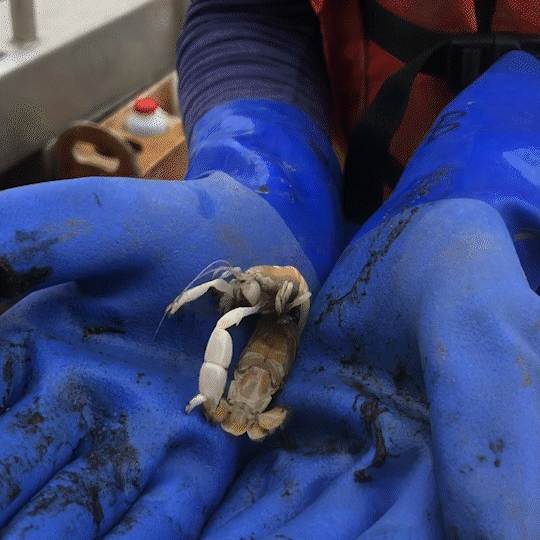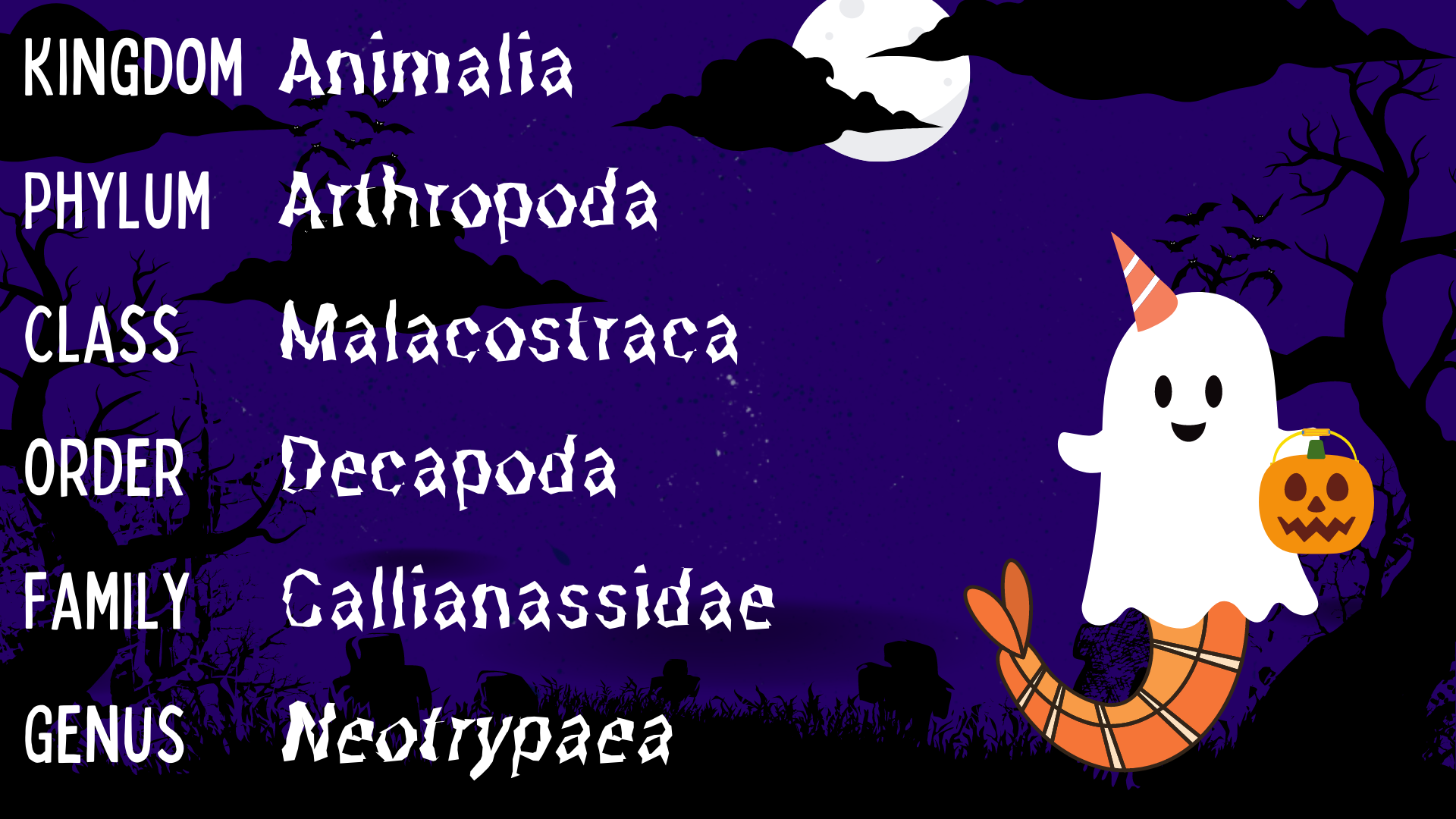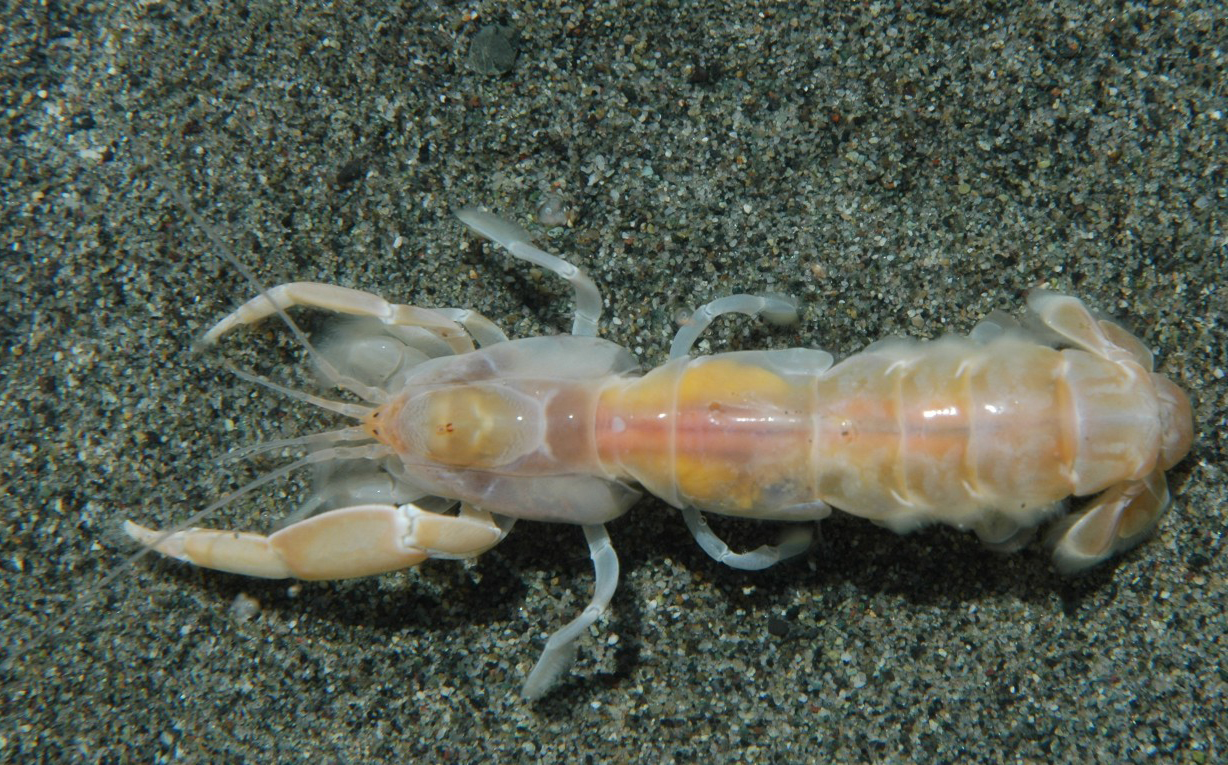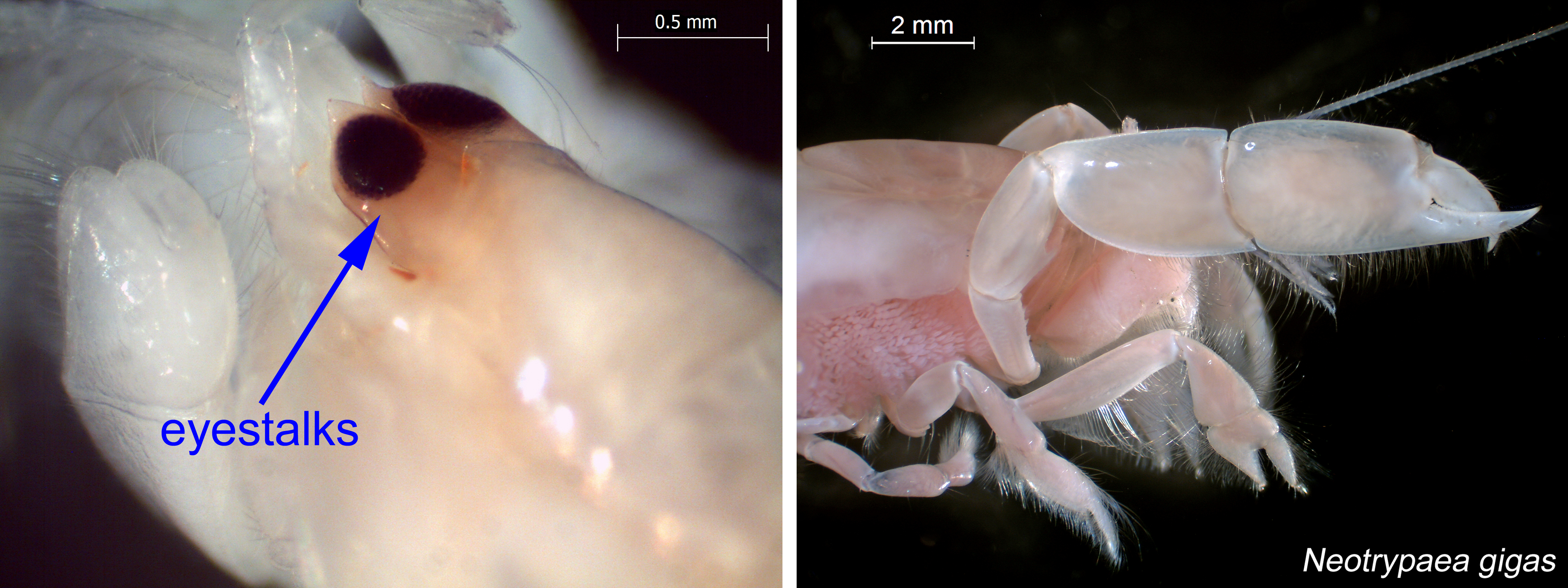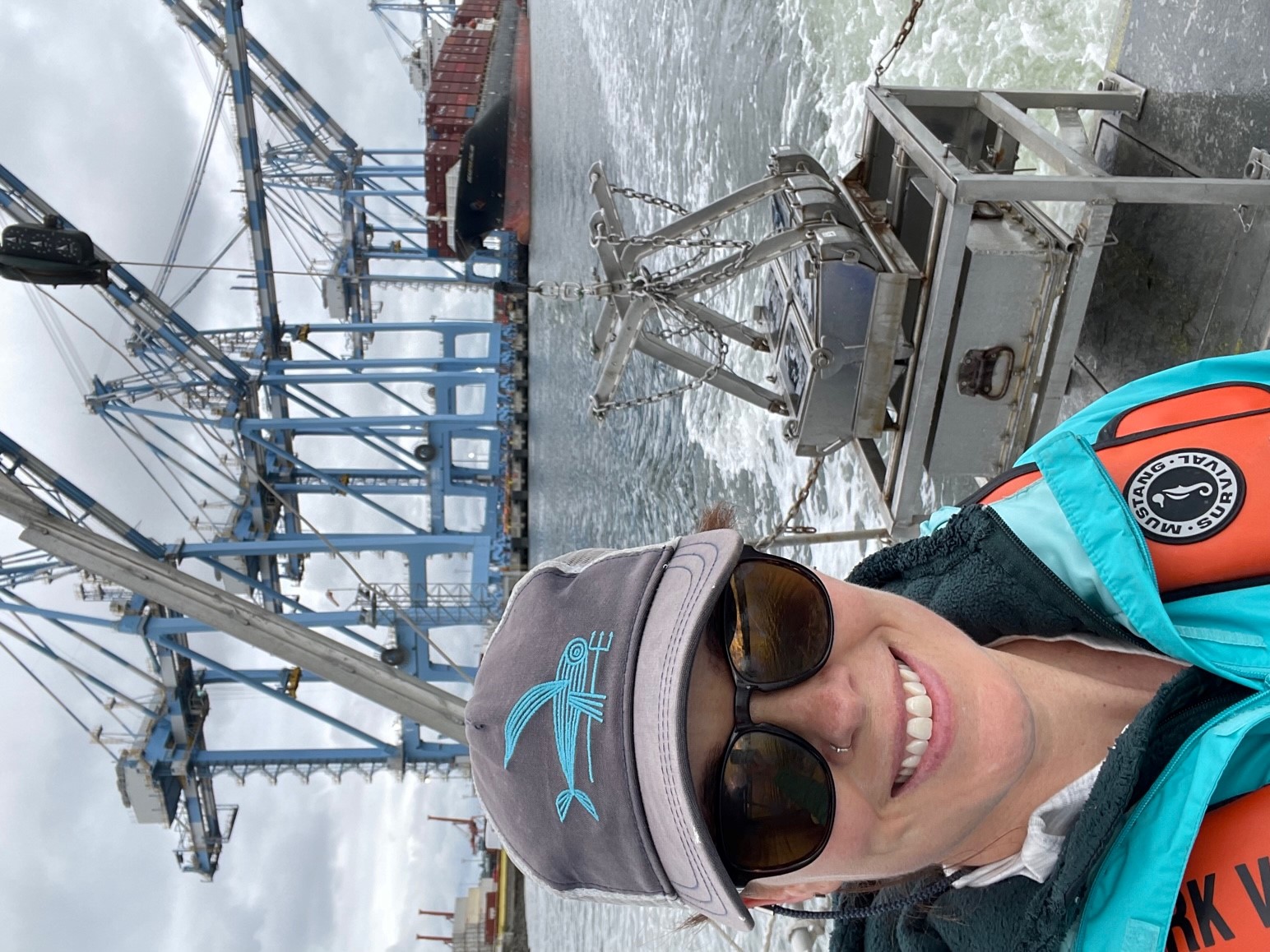Fall’s chill is in the air (finally!), leaves are turning colors, and skeletons and spider webs are popping up in yards all over town. Meanwhile, under the mud of Puget Sound, there’s a strange critter that stays in its ethereal costume all year long – the burrowing ghost shrimp.
Ghost in the shell
With their pale, fragile bodies (so translucent that you can see their organs through their shells), the ghost shrimps look almost otherworldly. But these little specters – more closely related to crabs than to true shrimp – are real-life ecosystem engineers, creating deep burrows by digging with their legs and claws.
This mixing and softening of layers of mud and sand, called bioturbation, transports oxygen and nutrients to deeper sediment layers. This is considered a beneficial ecosystem service for animals that live deep under the mud, where these vital resources normally wouldn’t be able to penetrate.
Phantom menace?
Burrowing ghost shrimp aren’t beloved by all; in fact, if you are a tiny surface-dwelling animal, you may find them to be the worst kind of neighbors. Excessive bioturbation from the burrowing activities of many ghost shrimp can turn the mud into quicksand, causing anything on the surface to sink.
Despite their tricks, ghost shrimp also have their treats… or rather, they ARE the treat! The bay ghost shrimp, Neotrypaea californiensis, is important in the diet of gray whales, which dig large “feeding pits” for them in the intertidal mud of North and Central Puget Sound, especially in Whidbey Basin, Saratoga Passage, and Possession Sound. Bay ghost shrimp (commonly found on the outer coast as well as in Puget Sound) are also prey for some species of fish and shore birds, and fishermen use them as bait for steelhead.
Haunted house
Ghost shrimp use their specialized hind legs to circulate water through their deep, branched burrows, creating an oxygen-rich environment with lots of food particles swirling around. These shadowy tunnels full of floating snacks attract guests like pea crabs, segmented worms, and even small fish, which creep around in the dark chambers. If you’re on the beach and see small mounds of sand under your feet, you may have spotted the openings of these busy “haunted houses.”
The claws come out
In the deeper areas of Puget Sound where our monitoring team collects samples, we more frequently encounter the narrow-clawed ghost shrimp, Neotrypaea gigas (you won’t find this subtidal species on the beach). N. gigas can be distinguished from its intertidal counterpart by eyestalks with tips that point away from each other, and a longer and narrower dominant claw.
LEFT: A close-up of Neotrypaea gigas, showing the head and eyestalks; RIGHT: Side view of N. gigas, showing the large claw.
Both species have impressive claws in relation to their body size, with the dominant claw much more pronounced in the male. He uses this as a weapon during mating season, to ward off other potential admirers from his chosen partner. Good thing ghost shrimp only get to be about 5 inches long, or that monstrous claw would be enough to scare us away too!
Critter of the Month
Dany is a benthic taxonomist, a scientist who identifies and counts the sediment-dwelling organisms in our samples as part of our Marine Sediment Monitoring Program. We track the numbers and types of species we see to detect changes over time and understand the health of Puget Sound.
Dany shares her discoveries by bringing us a benthic Critter of the Month. These posts will give you a peek into the life of Puget Sound’s least-known inhabitants. We’ll share details on identification, habitat, life history, and the role each critter plays in the sediment community. Can't get enough benthos? See photos from our Eyes Under Puget Sound collection on Flickr.


